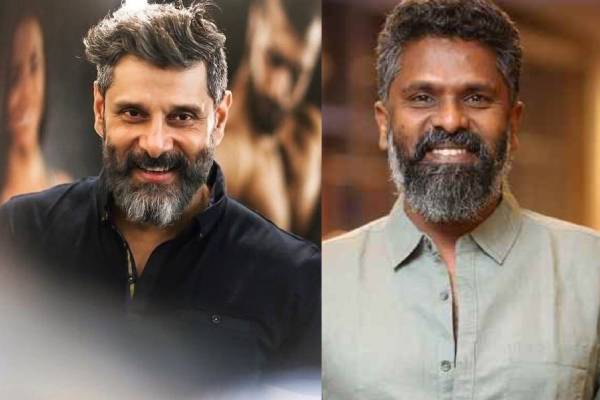The sensational summer hit “Oopiri” is winning universal applause from all quarters. Even Rajamouli, the creator of “Bahubali” has seen the film and praised director Vamshi for carrying the magical feel of the original film with improved Telugu sensibilities. For the team who helped make this possible, a bonanza of laurels and awards await. But for Tollywood , “Oopiri” offers lessons galore in a period experiencing surge in creativity and boldness in offering refreshing, different cinema to the film-crazy Telugu audiences.
Here are some lessons:
 1. Nothing Unofficial About this Remake: For as long as one remembers, Telugu film-makers sought permission from Bollywood, Kollywood and Mollywood original story-writers and producers for making remakes but rarely have approached Hollywood for seeking permission to remake their blockbusters. Even if you take some of the films which got remade into successful Telugu blockbusters like “Sisindri” (From “Baby’s Dayout”) or “Shubha Lagnam” (From “Indecent Proposal”), even a cursory mention is not made in the title credits of acknowledgements made for either adapting or remaking the original Hollywood film. Reasons cited ranged from outright disregard for copyrights to untraceability of the producers. But most makers hardly mentioned the original Hollywood film except the likes of Ram Gopal Varma or Puri Jagannaadh who put a preamble in the titles about being inspired by “GodFather” or some other movie. As far as the Korean films go, the less said the better! Most of the successful films in the last decade have been pickled versions of Korean movies which bear some uncanny resemblance in the themes. But “Oopiri” tread a different path from day 1. It was advertised as the official remake version of the French film “The Intouchables” and you will notice the credits in the opening and closing titles to the original makers. There could be a transactional exchange between the team that made the original and PVP pictures. That is good news: it means Tollywood is serious about intentions to take a remake reach out to wider audiences who are today well spread out globally – this audacity of making official remake versions was missing for decades either because media was not so well divergent now as it was then that one cannot make out an original from a copy or that the budget of the movie can afford a carve out of money for buying such rights.
1. Nothing Unofficial About this Remake: For as long as one remembers, Telugu film-makers sought permission from Bollywood, Kollywood and Mollywood original story-writers and producers for making remakes but rarely have approached Hollywood for seeking permission to remake their blockbusters. Even if you take some of the films which got remade into successful Telugu blockbusters like “Sisindri” (From “Baby’s Dayout”) or “Shubha Lagnam” (From “Indecent Proposal”), even a cursory mention is not made in the title credits of acknowledgements made for either adapting or remaking the original Hollywood film. Reasons cited ranged from outright disregard for copyrights to untraceability of the producers. But most makers hardly mentioned the original Hollywood film except the likes of Ram Gopal Varma or Puri Jagannaadh who put a preamble in the titles about being inspired by “GodFather” or some other movie. As far as the Korean films go, the less said the better! Most of the successful films in the last decade have been pickled versions of Korean movies which bear some uncanny resemblance in the themes. But “Oopiri” tread a different path from day 1. It was advertised as the official remake version of the French film “The Intouchables” and you will notice the credits in the opening and closing titles to the original makers. There could be a transactional exchange between the team that made the original and PVP pictures. That is good news: it means Tollywood is serious about intentions to take a remake reach out to wider audiences who are today well spread out globally – this audacity of making official remake versions was missing for decades either because media was not so well divergent now as it was then that one cannot make out an original from a copy or that the budget of the movie can afford a carve out of money for buying such rights.
 2. Content bigger Star than anybody: As part of the original, NTR Jr. Was roped in to do Karthi’s role as the vagabond hero who nurses Nagarjuna back to mental wellness. But NTR Jr brushed the role aside citing reasons like dates not available. It turned out Karthi did a performance that nobody could have taken away credit from – neither NTR Jr. Nor Allu Arjun. The performance is slightly improvised with a romantic angle with Tamannah but there is nothing starry about the role – Karthi doesn’t get a fight in the movie, he doesn’t sing too many romantic songs in the film, gets to do all the menial jobs in the film as per the story, and gets all the dirty looks from co-characters. Hardly the stuff that looks good for a comeback film. But that’s what happened – the role connected with the audience and today, Karthi is hailed as the backbone of the film. Even Nagarjuna despite the limitations of the film gets to use his feet and hands (lifeless for the most part) just once in a dream sequence that lasts but three minutes. Tamannah, the glam queen is dressed like a corporate honcho and loosens her dressing sense but once in a song. Moral of the story: It pays for Stars to take a backseat when content is the King. This would have been possible for stars who think beyond what their fans want them to act in roles. For both Karthi and Tamannah, it proved to be a great comeback film and for Nagarjuna, he is seen again as having the stomach for taking risks in a career that plateaued. Infact, Nag hit a hat-trick after “Manam”, “Soggade…” and now “Oopiri”. There is a lesson in this for all the superstars, stylish stars and power stars in Tollywood who keep fans above everything else. Like Mani Ratnam says, “All stars fade but an actor who selects different subjects endures.” It is high time, Tollywood stars think beyond the prisms of what the masses want.
2. Content bigger Star than anybody: As part of the original, NTR Jr. Was roped in to do Karthi’s role as the vagabond hero who nurses Nagarjuna back to mental wellness. But NTR Jr brushed the role aside citing reasons like dates not available. It turned out Karthi did a performance that nobody could have taken away credit from – neither NTR Jr. Nor Allu Arjun. The performance is slightly improvised with a romantic angle with Tamannah but there is nothing starry about the role – Karthi doesn’t get a fight in the movie, he doesn’t sing too many romantic songs in the film, gets to do all the menial jobs in the film as per the story, and gets all the dirty looks from co-characters. Hardly the stuff that looks good for a comeback film. But that’s what happened – the role connected with the audience and today, Karthi is hailed as the backbone of the film. Even Nagarjuna despite the limitations of the film gets to use his feet and hands (lifeless for the most part) just once in a dream sequence that lasts but three minutes. Tamannah, the glam queen is dressed like a corporate honcho and loosens her dressing sense but once in a song. Moral of the story: It pays for Stars to take a backseat when content is the King. This would have been possible for stars who think beyond what their fans want them to act in roles. For both Karthi and Tamannah, it proved to be a great comeback film and for Nagarjuna, he is seen again as having the stomach for taking risks in a career that plateaued. Infact, Nag hit a hat-trick after “Manam”, “Soggade…” and now “Oopiri”. There is a lesson in this for all the superstars, stylish stars and power stars in Tollywood who keep fans above everything else. Like Mani Ratnam says, “All stars fade but an actor who selects different subjects endures.” It is high time, Tollywood stars think beyond the prisms of what the masses want.
 3. Not much Publicity and Not much Costing: Because of good content that the crew believed in, the publicity started only after the audio got launched but it was still low-key. No big banners and Standis and no mega publicity preceded the release of the film. Perhaps, this is because PVP followed the same route as the previous hit “Kshanam” where the film generated its own buzz post-release. If you see the film’s costing, it doesn’t seem like a white elephant budget. Most of the film is shot in Annapurna Studios, the Billionaire’s mansion was indeed a Hyderabadi house and the shots in Paris were the only thing that would have costed something – which has got re-imbursements from the French government. Despite that, the production values were outstanding. Proves that content should drive costs, not vice-versa.
3. Not much Publicity and Not much Costing: Because of good content that the crew believed in, the publicity started only after the audio got launched but it was still low-key. No big banners and Standis and no mega publicity preceded the release of the film. Perhaps, this is because PVP followed the same route as the previous hit “Kshanam” where the film generated its own buzz post-release. If you see the film’s costing, it doesn’t seem like a white elephant budget. Most of the film is shot in Annapurna Studios, the Billionaire’s mansion was indeed a Hyderabadi house and the shots in Paris were the only thing that would have costed something – which has got re-imbursements from the French government. Despite that, the production values were outstanding. Proves that content should drive costs, not vice-versa.
 4. Content is still the king: The initial success of “Oopiri” is encouraging enough. Released over the longest weekend so far in 2016, it promises to extend the run of the film till Monday atleast and the overseas reception also seems promising. For PVP who made a string of flops riding on conventional content, the last two films of “Kshanam” and “Oopiri” must have been a revelation of sorts. No point in making films with backdrops in areas far-flung from Telugus like Rajasthan and Bihar and Delhi. Sometimes, simple content which evokes universal emotions can deliver better results at box-office than hackneyed drama and convoluted plots. The beauty of “Oopiri” is the way two men connect from worlds different from each other. It has a universal appeal and many subtextual messages that resonate with everybody in daily life. The emotions within the story generated more positivity and vibrancy than what ten-crore sets and Bangkok story-sittings wouldn’t have generated. This was what films looked like in the golden sixties – a story round the corner of your neighbour, happening in front of your eyes. Eight of ten films were like this. All that changed in the seventies and the eighties until the nineties just took the game away from genuine, heartwarming story-driven content to making films for the masses with formulaic content that grated on your senses. “Oopiri” is actually a celebration of life and gives that extra bit of lung-space for viewers getting choked on stupid, polygamous content. Proves that the simple rule to rev up the percentage of success is to make films rich in content not star value or set value.
4. Content is still the king: The initial success of “Oopiri” is encouraging enough. Released over the longest weekend so far in 2016, it promises to extend the run of the film till Monday atleast and the overseas reception also seems promising. For PVP who made a string of flops riding on conventional content, the last two films of “Kshanam” and “Oopiri” must have been a revelation of sorts. No point in making films with backdrops in areas far-flung from Telugus like Rajasthan and Bihar and Delhi. Sometimes, simple content which evokes universal emotions can deliver better results at box-office than hackneyed drama and convoluted plots. The beauty of “Oopiri” is the way two men connect from worlds different from each other. It has a universal appeal and many subtextual messages that resonate with everybody in daily life. The emotions within the story generated more positivity and vibrancy than what ten-crore sets and Bangkok story-sittings wouldn’t have generated. This was what films looked like in the golden sixties – a story round the corner of your neighbour, happening in front of your eyes. Eight of ten films were like this. All that changed in the seventies and the eighties until the nineties just took the game away from genuine, heartwarming story-driven content to making films for the masses with formulaic content that grated on your senses. “Oopiri” is actually a celebration of life and gives that extra bit of lung-space for viewers getting choked on stupid, polygamous content. Proves that the simple rule to rev up the percentage of success is to make films rich in content not star value or set value.


































